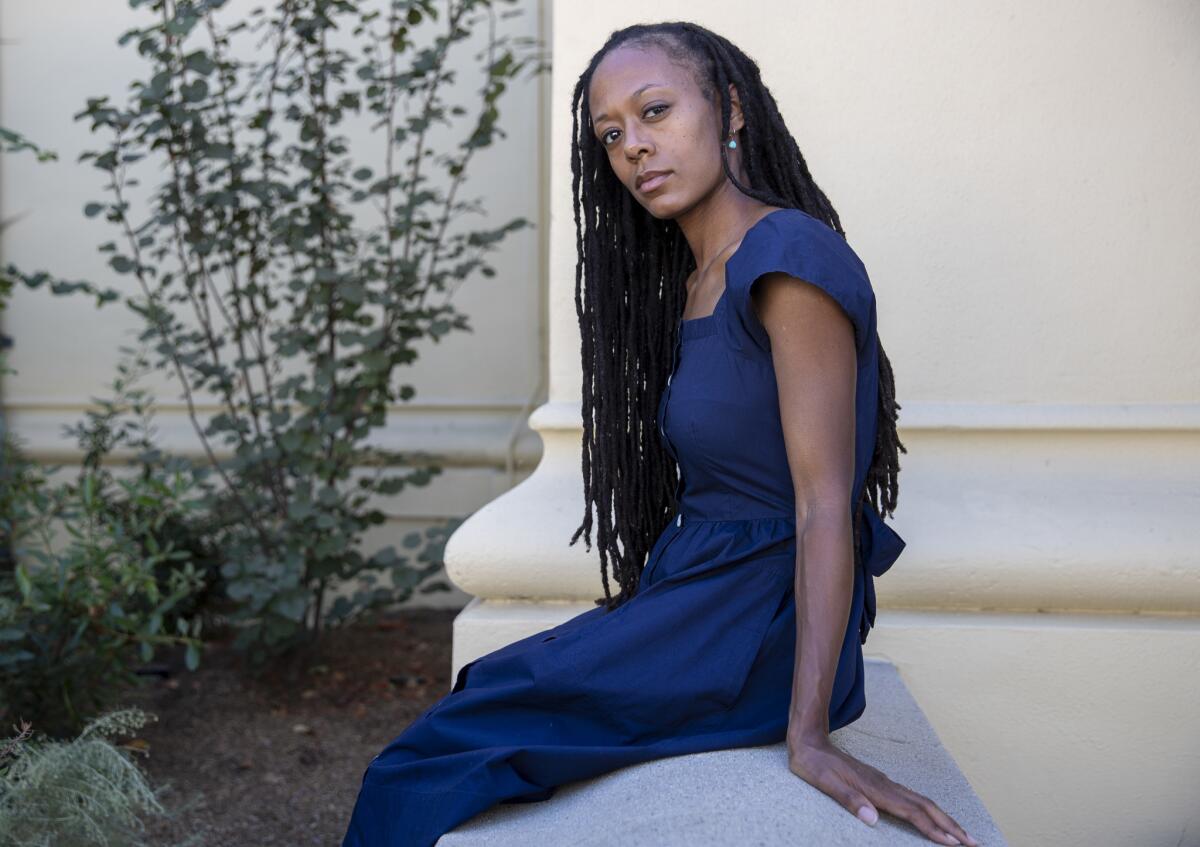Photographer Janna Ireland is ensuring that modernist architect Paul R. Williams isnât forgotten

Artist Janna Ireland is on a hunt across Southern California for Paul R. Williams. For nearly two years, sheâs searched out buildings to photograph â mansions and housing projects, churches and banks designed by the Angeleno architect who died in 1980.
Ireland has her work cut out for her. Williams was prolific for decades. From 1923, when he became the first black member of the American Institute of Architects, until retiring in 1973, he produced a broad body of work that spanned different styles from Mission Revival to Midcentury Modern. He built homes for Hollywood elite such as Frank Sinatra, and the First African Methodist Episcopal Church in West Adam, where he was a member of the congregation.
Iâm interested in stories about black people, and Iâm interested in stories about Los Angeles. Thereâs an intersection there.
— Janna Ireland
But Williams never received the kind of widespread recognition afforded to his peers. Although posthumously awarded the AIA Gold Medal for Excellence in 2017, he occupies a tenuous place in the L.A. design canon.
And, importantly, thereâs no definitive archive of his work.
After his death, a large collection of his drawings and papers was stored at the Broadway Federal Savings & Loan, a building he designed. But the bank was destroyed in a fire during the 1992 L.A. riots following the acquittals of the police officers whoâd been charged in the beating of Rodney King.
âIâm interested in stories about black people, and Iâm interested in stories about Los Angeles. Thereâs an intersection there,â says Ireland, who grew up in Philadelphia, where her father first introduced her to photography. âGrowing up in the 1990s, L.A. seemed like a scary place, but also a glamorous place. Rodney King, the Northridge earthquake, the O.J. Simpson trial, but also âBeverly Hills 90210.â â
Ireland began photographing Williamsâ signature architecture by following leads given to her by architect Barbara Bestor, executive director of the Julius Shulman Institute at Woodbury University. Bestor was mounting a photography exhibition of his designs, and artist James Welling suggested Ireland for the commission. âIt has all of this psychological depth,â says Bestor of Irelandâs work. âHer images paint a portrait of a person as an architect. They donât simply document the architectural quality of the building but capture the thought that went into making it.â
Later, in the hopes of photographing Founderâs Church of Religious Science, a monumental white cylinder on 6th Street, Ireland simply phoned the church office. Her photo captures both the simplicity of Williamsâ design â the reinforced concrete sanctuary topped by a steel dome â and its delicacy. In Irelandâs composition, the heaviness of the building is undone by a pattern of crosses in the concrete block latticework, which screens the church from the street.
Ireland tracked down more people who live in Williams houses via word-of-mouth tips.
âI appreciate the generosity of people letting a stranger into their house,â she says. âI like to talk to the homeowners. I want them to know understand that my portrayal of their home is respectful. Iâm looking for Paul Williams in their house, not if the bed is made.â
Last winter, Ireland showed many of the photographs in exhibition âThere Is Only One Paul R. Williams,â curated by Andrea Dietz and Audrey Landreth and organized by the Julius Shulman Institute. Her photographs are also featured in the âLos Angelesâ issue of Aperture magazine, currently on newsstands.
â[Williams] is known for arched doorways and beautiful staircases, but they are all so different. I donât always know what a house is going to look like when I go in,â she says. âIâm not looking for any one thing, but I keep finding the same things.â
Irelandâs search continues.
She traveled to Las Vegas to photograph whatâs left of Williamsâ iconic La Concha Motel. The 1961 building was demolished in 2004, but the lobby, topped by swooping parabolic shells was preserved. Irelandâs photo returns a kind of majesty to the remains, which are now part of the Las Vegas Neon Museum.
For Ireland, however, the body of work shown last year is special. She made it while she was working full time and pregnant with her second child. âIt was a personal triumph to get that work done when I had a toddler, doctor appointments, and meetings,â she says.
In October, Ireland will exhibit photographs her âThe Spotless Mirrorâ series, as a visiting artist at Harvard-Westlake school. The project grew out of an exploration of how, as a black woman, she fits into her husband Joeâs family, who are white. The new photographs are striking in that they not only feature self-portraiture; they also include her children and husband.
âThere is so much guilt that comes with wanting to work in a serious way when you have children,â says Ireland. âIncluding them in the work is about letting them know that I love them. I donât want them to think they are any less important to me, but Iâm still going to make the work.â
An intimate investigation of identity in relationship to motherhood, race, and affluence, the new work is also architectural, focusing on a single house in the Valley: the well-appointed home of Joeâs grandmother. In contrast to Williamsâ designs, many of which have succumbed to time, demolition, or renovation, the Valley house has remained almost unchanged since his grandmotherâs death 25 years ago. Ireland and family pose against parquet floors and clipped hedges.
âThe Paul Williams work isnât about the people who live in the homes and their stuff, but the work in the Valley is about someone in the house,â she says.
âIâm looking for her.â
More to Read
The biggest entertainment stories
Get our big stories about Hollywood, film, television, music, arts, culture and more right in your inbox as soon as they publish.
You may occasionally receive promotional content from the Los Angeles Times.










